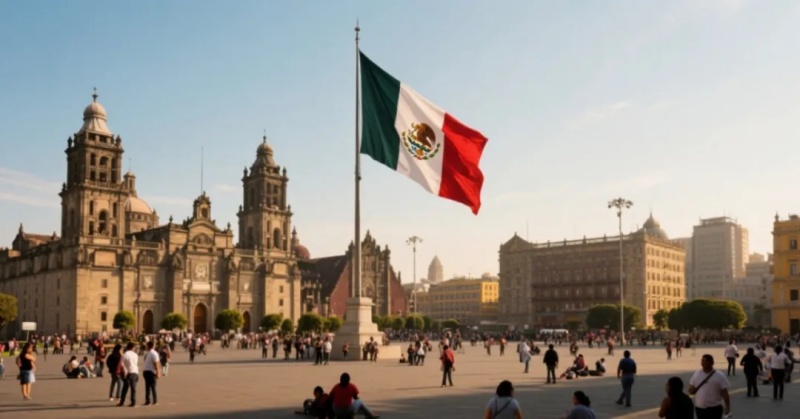
The Mexican glass packaging market has reached $738 million in 2024. Looking forward, IMARC Group expects the market to be in the market between 2025 and 2033The compound annual growth rate of 4.5% will reach 11.46 by 2033billion dollars. The major factors driving the growth of the market include rising demand for sustainable packaging, increasing urban population, and continued expansion of the food and beverage and pharmaceutical industries. The popularity of high-end glass products, the promotion of recycling programs and the increase in export capacity have made the industry more environmentally friendly, innovative and globally competitive.

Market Highlights:
Strong demand for eco-friendly recyclable packaging solutions is driving strong market growth;
Industries such as food, beverage, cosmetics and pharmaceuticals are increasingly using glass packaging to guarantee the freshness of the product and enhance the high-end feeling of the product;
Consumers are increasingly opting for non-toxic, reusable, and reusableEco-friendly packaging form.
Mexico Glass Packaging Market Trends and Drivers
As businesses and consumers become more environmentally conscious, the Mexican glass packaging market is growing rapidly. Against the backdrop of growing plastic pollution, glass is favored for its recyclability, safety, and high-end appearance. In 2023, Mexico's Circular Economy Law was introduced, setting clear targets for reducing single-use plastics and driving the market transition to glass packaging. Large brands such as Grupo Modelo and Herdez have also started to adopt more glass packaging in response to national policies and market trends.
In particular, young urban consumers have played an important role in driving the impact. According to a Nielsen survey, 68% of Mexican consumers prefer recyclable packaging, with glass being the first choice. Although glass is heavier and more fragile to transport and handle than plastic, and more expensive to transport and handle, companies are responding to this challenge through technological transformations. For example, Vitro is investing $50 million in Guadalajara to expand its plant in 2024. to shorten the supply chain and lower the carbon footprint. As of mid-2024, 45% of the glass used for packaging in Mexico has been recycled. Projects such as the Plastic-Free Initiative have played a positive role, but recycling systems in rural areas still need to be strengthened.
Consumers see glass as a cleaner and healthier packaging material, which is in line with the rise of organic food and beverages. Emerging categories such as cold-pressed fruit juices, craft agave, and probiotic drinks have adopted glass packaging. For example, the well-known brand José Cuervo has launched high-end custom tequila in glass bottles, focusing on high-end markets such as Mexico City and Monterrey. Emerging brand Green Roots has also stood out in the market with glass packaging, responding to concerns about chemicals leaching from plastics. The sales volume of glass packaging for functional drinks and health products increased by 22% and 30% year-on-year, respectively.
Regulatory support and export growth
The 2023 revision of the Federal Waste Act to fine businesses that continue to use non-recyclable materials prompted Coca-Cola FEMSA to launch a new policy in 2024Increase the use rate of glass bottles by 15% per year. Under the framework of the U.S.-Mexico-Canada Agreement (USMCA), Mexico's glass bottle exports to the U.S. (for alcohol and specialty foods) are growing by 12% per year. Government projects such as "Proyecto Vidrio", which subsidizes production companies using low-emission furnaces, have reduced the industry's overall carbon emissions by 18%. However, rising energy prices and fluctuations in raw materials such as silica sand still put cost pressure on companies.
In order to enhance their competitiveness, manufacturers are increasing their research and development of lightweight glass. For example, O-I's "Lean+Green" series of glass bottles are 20% lighter and more suitable for export. Smart packaging is also gradually becoming popular, and high-end brands are enhancing product traceability and environmental transparency through QR codes, NFC tags, etc. Casa Madero, a long-established winery in Mexico, has adopted digital labels to increase consumer trust. In addition, Vitro has partnered with the Massachusetts Institute of Technology (MIT) to develop a 25 percent lighter than conventional glassThe new material, which is just as strong, helps reduce transportation costs and environmental impact.
Uneven regional development > future prospects
This is despite the fact that urban recycling rates have exceeded 50% and there are incentives for supermarket return (e.g. Sorianasupermarket deposit return program), but recycling systems remain weak in southern Mexico. The northern region is growing faster because of its infrastructure and close connectivity to the United States. Global sustainability initiatives, such as the EU Green Deal, are likely to further align the Mexican market with international standards.
Energy costs and access to raw materials remain major challenges for SMEs. Nonetheless, industry leaders are testing reusable packaging and composite materials to build long-term solutions. Overall, the future of Mexico's glass packaging market will depend on how companies can meet consumers' expectations for high-end and eco-friendly packaging while controlling costs.
Name: Litong Glass
Mobile:+86 16632961602
Tel:+86 16632961602
Email:vip@litongglass.com
Add:Shahe city,Hebei,China